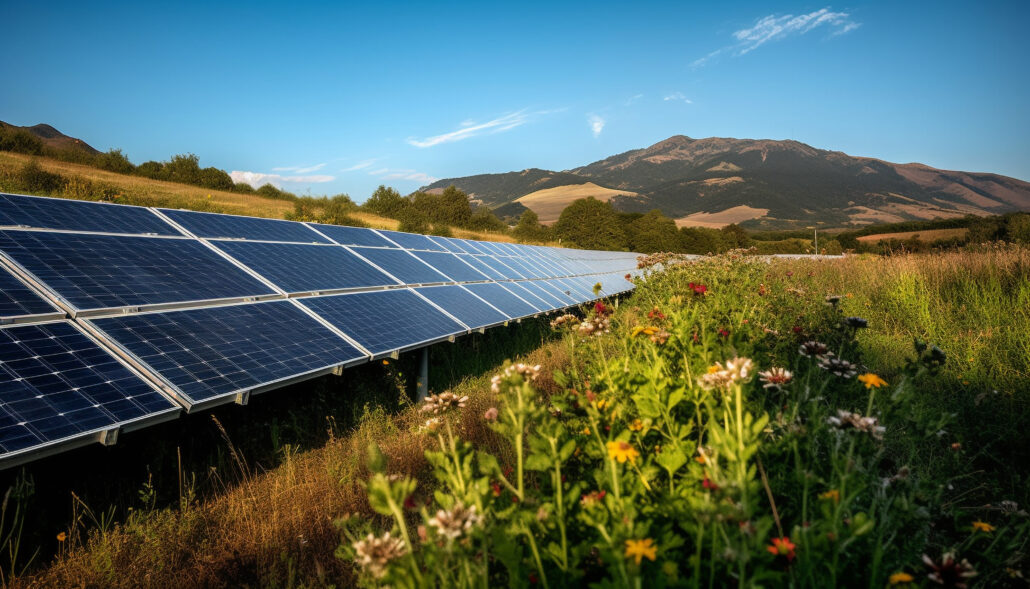Written by Aggeliki Marinou, Environmental Engineer at Wattcrop.
As the world faces the pressing need to switch to sustainable energy sources, innovative solutions are appearing in surprising locations. One such solution is the idea of “renewable energy islands,” which are self-sustaining ecosystems that utilize renewable energy to fulfill their own energy requirements and supply surplus energy to nearby areas. These islands, often situated in coastal regions, provide a hopeful model for a greener future.
The Concept of Renewable Energy Islands
Renewable energy islands are defined by their ability to generate electricity primarily from renewable sources such as wind, solar, hydro, and biomass. These islands leverage their natural resources to create a self-sufficient energy ecosystem. The concept is particularly attractive for coastal areas, where the abundance of wind and solar energy, combined with the potential for wave and tidal power, provides a rich tapestry of renewable energy opportunities.
Key Components of Renewable Energy Islands
1. Wind Power: Coastal areas often experience strong and consistent winds, making wind turbines a cornerstone of the renewable energy island. Offshore wind farms can be installed to capture high-energy winds, generating significant amounts of electricity.
2. Solar Power: Solar panels are installed on rooftops, open land, and even floating on water bodies. The high solar irradiance in many coastal areas makes solar power a reliable and efficient energy source.
3. Wave and Tidal Energy: Coastal islands can harness the kinetic energy of waves and tides. Technologies such as wave energy converters and tidal turbines convert the mechanical energy of water movement into electricity.
4. Biomass and Waste-to-Energy: Organic waste from agriculture, forestry, and municipal sources can be converted into biogas or used directly in biomass power plants. This not only provides energy but also helps manage waste sustainably.
5. Energy Storage: To ensure a stable energy supply, especially when renewable sources are intermittent, energy storage solutions such as batteries and pumped hydro storage are essential. These systems store excess energy generated during peak production periods for use during low production periods.
Benefits of Renewable Energy Islands
Environmental Impact: By utilizing renewable energy sources, these islands greatly decrease greenhouse gas emissions and air pollution. This aids in the global fight against climate change and shields local ecosystems from the detrimental effects of fossil fuels.
Economic Advantages: Renewable energy islands can become hubs for green technology and innovation, attracting investment and creating jobs. The development and maintenance of renewable energy infrastructure provide employment opportunities and stimulate local economies.
Energy Independence: Renewable energy islands reduce dependence on imported fossil fuels, enhancing energy security. This is particularly beneficial for remote islands that often face high costs and logistical challenges associated with importing fuel.
Resilience and Adaptation: These islands are better equipped to withstand and recover from natural disasters. Decentralized and renewable energy systems are less vulnerable to disruptions compared to centralized fossil fuel-based systems.
Sustainable Development: Renewable energy islands promote sustainable development by integrating environmentally friendly practices into their energy production. This sustainable approach extends to other aspects of island life, such as waste management and water use, fostering a holistic model of sustainability.
Examples of Renewable Energy Islands
Samso, Denmark: Samso is a prime example of a renewable energy island. It generates all its electricity from wind and biomass and uses solar and biomass energy for heating. The island has become a model of sustainability, demonstrating the feasibility and benefits of transitioning to renewable energy.
El Hierro, Spain: El Hierro, one of the Canary Islands, has implemented a combination of wind and hydro power to become nearly self-sufficient in renewable energy. A wind farm generates electricity, while excess energy is used to pump water to a reservoir. This water is then released to generate hydroelectric power when wind energy is insufficient.
King Island, Australia: King Island utilizes a mix of wind, solar, and biodiesel to reduce its reliance on imported diesel fuel. The island’s hybrid renewable energy system includes battery storage and flywheels to ensure a stable power supply.
Tilos, Greece: Tilos has become a pioneer in the use of renewable energy in the Mediterranean. The island employs a combination of wind and solar power, supported by battery storage systems, to meet its energy needs. This project has made Tilos one of the first islands in the region to achieve energy independence through renewables.
Challenges and Future Prospects
While the potential of renewable energy islands is immense, several challenges need to be addressed. Initial investment costs for renewable energy infrastructure can be high, and technological advancements are needed to improve the efficiency and reliability of renewable energy systems. Additionally, integrating various renewable energy sources and ensuring seamless energy storage and distribution require sophisticated management systems.
Despite these obstacles, the outlook for renewable energy islands remains promising. Ongoing progress in renewable energy technologies and energy storage solutions, along with supportive policies and investments, will hasten the development of these self-sufficient ecosystems. As more islands and coastal regions implement renewable energy models, they will play a crucial role in global sustainability efforts, acting as symbols of innovation and resilience in the battle against climate change.
In conclusion, renewable energy islands represent a transformative approach to achieving energy sustainability in coastal areas. By harnessing the power of wind, sun, and sea, these islands not only ensure their own energy independence but also set a powerful example for the rest of the world. As we move towards a more sustainable future, the lessons learned from these pioneering communities will be invaluable in shaping a cleaner, greener planet.


